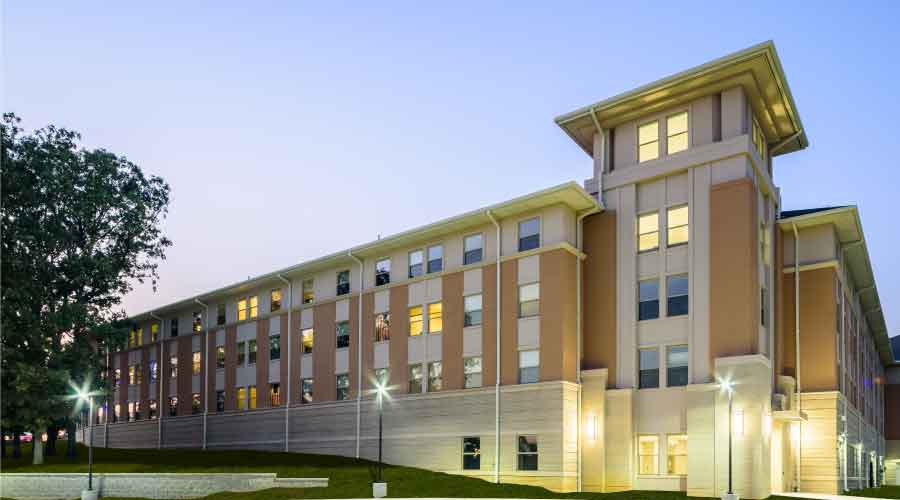
Challenges in Facility Management During and Emerging from the Pandemic
Darrell Rounds of GM answers some of the challenging questions facing facility management currently. March 23, 2023
By Jeff Wardon, Jr., Assistant Editor
The pandemic was a challenging time for virtually everyone, let alone facility managers. From having less staff in the building to social distancing, there was a lot of change to grapple with. How exactly did facility managers navigate this period? Furthermore, what did they learn from it?
To answer these questions, Darrell Rounds of General Motors Company presented the session “Burning Questions, Stone-Cold Solutions” at NFMT this week.
NFMT: What was it like initially for facilities managers and their responses to the pandemic?
Rounds: I'll say that it was a lot of uncertainty because of the information that was given to us. We were getting a lot of information from different sources. Also, we were trying to understand what the requirements were by law for us to have people in the building. At first, basically organizations had to send all of their people home. That is with the exception of a small few individuals that were deemed as critically essential to the operation.
Then, after the initial guidelines, things just got really quiet. Soon after, you would get updates daily of where the numbers were, and you would see the number of coronavirus cases. In addition to that you would get changes to the requirements of who could be present and what protocols you had to put in place for individuals to come in. It even pertained to facility managers with the entry protocol. With respect to things like sanitizing, temperature checks, and the social distancing aspect.
So, you had to put things in place to ensure that people, when they were in the building, were socially distanced. Then for individuals that were operating in the building, you have to make sure that things were being sanitized at a significantly increased frequency. Additionally, you had to make sure that you had things in place so that employees that were working had the opportunity to sanitize themselves. Not to mention the number of masks that you had to order. If in some cases, some entities would not allow individuals to use their homemade mask, they gave them a mask to wear.
NFMT: What effect did the subsequent supply chain issues have on facilities management?
Rounds: I think from my own personal experience hand sanitizer was a big commodity. It was interesting how people were treating it like it was liquid gold. For a time, you also had to pay a premium on that and other items like face masks. However, then things leveled out and you could get the things you needed.
Even then, we didn't see a lot of issues because there wasn't anyone there, there. There weren't any people in the buildings. So, you really didn't have as big supply issues. I also remember the shortage of toilet paper because everybody was just buying it up. Though, since there are no people in the building, who's going to use the toilet paper? Is that really a supply chain issue for facility managers then?
NFMT: What are the biggest challenges facilities managers face now as they emerge from the pandemic?
Rounds: Making sure that team members when they come back to work feel comfortable and safe. Another one of the things that the pandemic taught us was that there's multiple ways that we can get our work done without being in a physical location. With that came a sense of flexibility that employees have become accustomed to by working remotely. So, as you bring people back into the workplace, it's necessary to ensure that they have that same type of flexibility in getting their work done. They also should have the different amenities they would have in order for them to accomplish their best work.
A lot of individuals work from home, so they have become comfortable with their own workspaces. So how do you make the workspace comfortable for the employees to get their best work done right? Just the fact that things aren't the same as they were before the pandemic era. So just the nature of making sure that things are clean and sanitized.
There’s also making sure that the workspace is being utilized most efficiently. This is because the pandemic basically showed a lot of organizations that they don't need the real estate. Basically, that you need as much real estate as you have. So, a challenge could be finding and optimizing the space that you do have for the workforce that you have. That’s so you’re minimizing waste as it pertains to space, money and costs.
NFMT: What are the most important lessons that facilities managers can learn from the pandemic?
Rounds: One is the ability to adapt and be flexible since the pandemic forced us into hybrid working situations. So, making sure that employees have hybrid options to get their best work done. Another point is being able to collaborate with others in order to solve problems. The pandemic, from a facilities management standpoint, created a very, very good problem statement for us. We can't work in the building, so now what? Then that generated other problem statements such as: for us to work in a building, these certain things have to be in place.
Then there’s just being open to strategize on solutions to problems as they arise. The thing is that lot of situations that we face in the facility management industry are not novel. Mostly the things that we face are things that every facility manager deals with. That presents an opportunity to learn from others. So, a big lesson could be to leverage the network or the FM community to increase cooperation so that we all get better together.
Jeff Wardon, Jr. is the assistant editor for the facilities market.
Next
Read next on FacilitiesNet












